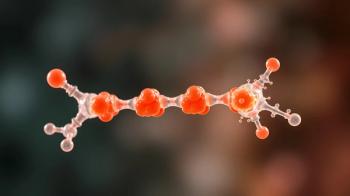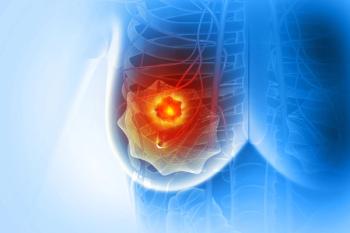
Breast Cancer Survivors Use Frozen Eggs, Ovarian Tissue to Conceive
Study shows the mortality rate among breast cancer survivors is lower among those who received fertility preservation.
Women with breast cancer whose eggs or ovarian tissue were frozen had more children after their diagnosis than women who did not use those fertility preservation methods before beginning cancer treatment, according to a new study published in JAMA Oncology.
Breast cancer is the most common type of cancer among women, with nearly 10% of breast cancer cases occurring in women younger than 45 years of age, according to the study authors. Some of these women have not had their first child when they receive their diagnosis, and common cancer treatments can damage ovarian tissue and push many women into early menopause.
“Information about the possibilities of having children after breast cancer treatment, with or without fertility preservation, is very important for women who suffer from breast cancer at reproductive age,” said first author Anna Marklund, a PhD student in the Department of Oncology-Pathology at the Karolinska Institutet, in a press release. “We hope that the conclusions of our study can increase the body of knowledge so that more women with breast cancer who want to have children can make informed decisions in consultation with their doctors.”
For women with breast cancer who want to have biological children in the future, physicians often recommend fertility preservation by freezing eggs, embryos, or small pieces of ovarian tissue. In the study, investigators followed 425 women with breast cancer who had fertility preservation treatment at Swedish university hospitals between 1994 and 2017. They compared childbirth by these women with a matched control group of 850 breast cancer patients who did not have fertility preservation.
According to their findings, childbirth and treatments in the group with fertility preservation were 2.3 times and 4.8 times more common, respectively. Specifically, 23% of the women with fertility preservation gave birth to at least 1 child within the average span of 4.6 years after diagnosis compared with 9% of women in the control group who were followed for an average of 4.8 years. Of the women who were followed for 10 years, 41% in the group with fertility preservation had at least 1 child whereas just 16% of women without fertility preservation had a child during that period.
Interestingly, the authors found that the mortality rate was lower in the group who received fertility preservation (5.3%) compared with the control group (11.1%). However, they said it is not possible to draw any conclusions about causality based on the register data the researchers analyzed, since only total survival was included instead of disease-specific survival.
“It is possible that the desire, and not just the ability, to have children differed between groups and that this, at least to some degree, explains the differences in childbirths,” said senior author Kenny Rodriguez-Wallberg, MD, in the press release. “We can, however, draw the conclusion that fertility preservation is safe in breast cancer patients and that there is a link between this treatment and the probability of having children after breast cancer.”
REFERENCE
Frozen eggs and ovarian tissue helped women conceive children after breast cancer [news release]. EurekAlert; November 19, 2020.
Newsletter
Stay informed on drug updates, treatment guidelines, and pharmacy practice trends—subscribe to Pharmacy Times for weekly clinical insights.


















































































































































































































